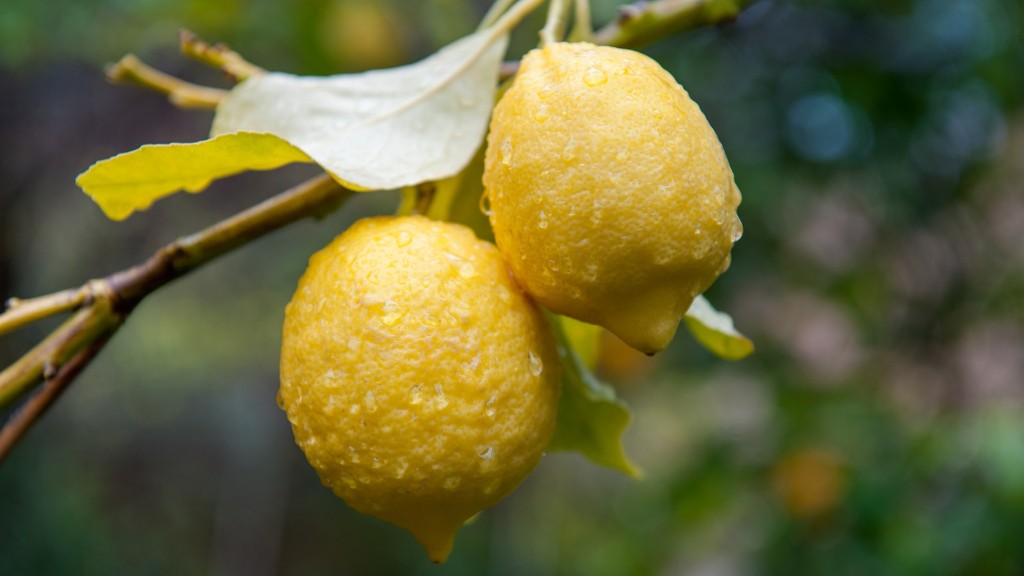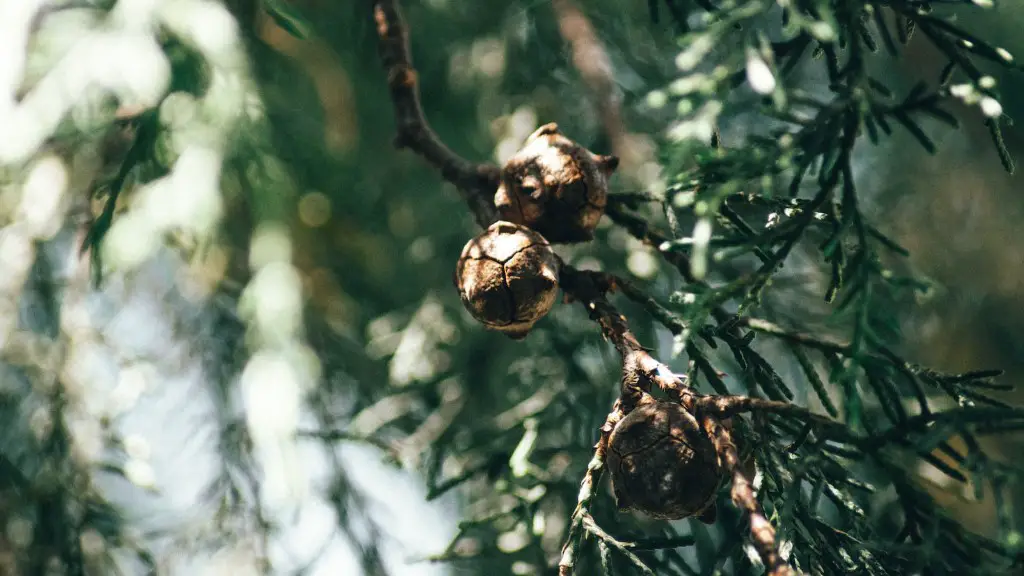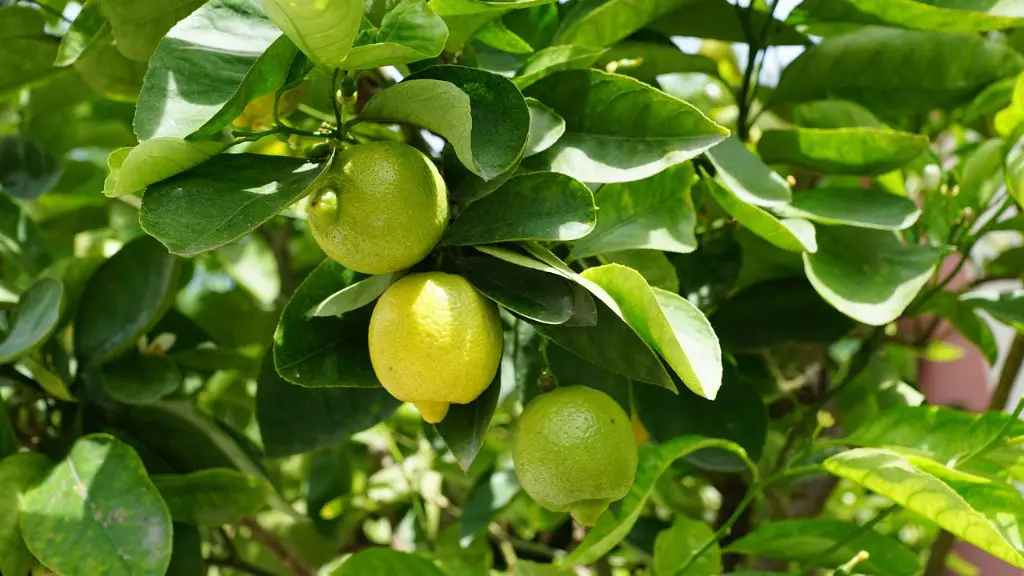Bringing in a lemon tree indoors can be a great way to add flare to your living space and provide fresh citrus fruit year-round. However the timing of when to start bringing the lemon tree inside needs to be carefully considered. To ensure the health and well-being of your lemon tree, start bringing it in at a specific time of year.
When bringing a lemon tree inside, you should aim to bring it in when average overnight temperatures go below 50°F. If you fail to do so before the temperatures reach this level, your citrus tree may suffer irreversible damage. Start paying attention to the forecast and plan to bring it inside at least one or two weeks before the actual temperature dip in order to make for a successful transition.
To get your lemon tree acclimated to life indoors, begin the transition slowly. Start by bringing it inside the house for a few hours a day, and gradually increase the time in the house. Doing this will allow the lemon tree to adjust to the artificial light and dry air found indoors. Additionally, it will decrease the shock that would otherwise be caused should you bring the lemon tree inside suddenly.
Once the lemon tree is inside and acclimated, providing it with the right environment is key. Find the lemon tree a spot that has access to plenty of light but not direct sun throughout the day. Also, be sure to give your lemon tree plenty of moisture. Lemon trees require moist soil in order to thrive, so water it regularly.
When the weather starts to warm up again and overnight temperatures rise above 50°F, you can safely transition the lemon tree back outdoors. Start the process gradually when transitioning back outdoor by gradually increasing differences of indoor and outdoor temperatures. And, just as before, water it regularly in order to keep the soil moist.
Caring for a Lemon Tree Indoors
When inside, it is important to provide the lemon tree with enough light, moisture and nutrients for it to thrive. Aim for 12-14 hours of light each day to get the most out of the tree. Lemon trees require at least 2 inches of water per week; water deeply and avoid watering too frequently. Use fertilizer specifically for citrus trees in order to give it the essential nutrients it needs.
Finally, to maintain optimal health, perform regular check-ups on the tree. Inspect the leaves, stems and branches of the tree looking for any signs of pests, diseases or fungus. If a problem is noticed, treat the tree quickly with a safe and organic pesticide or fungicide.
Pruning a Lemon Tree
When the lemon tree is inside, pruning it periodically can help maintain its size and encourage new growth. Pruning can be done in the spring, when the tree is just beginning to flower or fruit. Carefully examine the tree and then, using sterile pruning shears, trim off any dead, damaged or overcrowded branches. Also, don’t be afraid to remove any suckers or water sprouts that appear at the base of the tree.
When done right, pruning a lemon tree will help keep it neat and manageable in size, while encouraging healthy new growth. Don’t be shy when pruning, as the top priority should be the health of the tree.
Pests and Fungus
Unfortunately, lemon trees are susceptible to a variety of pests and fungus. Therefore, it is important to inspect the tree periodically, especially if you notice any changes or discoloration in the leaves. Common pests that attack lemon trees include aphids and mealybugs; whereas, common fungi include powdery mildew and sooty mold.
No matter the issue, address it promptly. The longer it is ignored, the more damage that can be done. Numerous natural and chemical solutions are available that can be used to rid the tree of any pests or fungus. In some cases, fungicides and insecticides may need to be used, so it is always best to contact a local extension for advice.
What to Do With Lemons
As your lemon tree begins to produce fruit, you’ll need to start harvesting. Lemons are ripe when they are brightly colored, firm and heavy. Don’t pull the lemons off the tree as this may cause even more damage to the tree. Instead, you should use a pair of sharp pruning shears to cut the lemons off. This way, the stem of the lemon remains attached to the branch, leaving the branch healthy and strong.
Of course, the best part about having your own lemon tree is being able to enjoy the delicious lemons you harvest. Naturally, many people like to make lemonade, but be sure to save some lemons for other recipes as well. Lemons can be used to make a variety of dishes from desserts to salads and more. Regardless, you’ll be sure to enjoy the fresh lemons your tree produce.
Fertilization
Using the right fertilizer is key to getting the most out of your lemon tree. Don’t use a fertilizer that is high in nitrogen as this will only encourage your tree to hoard in foliage as opposed to producing lemons. Instead, use a nitrogen-rich fertilizer specifically designed for citrus trees. Organic fertilizers are also available, but they may need to be used more frequently than chemical fertilizers.
It is best to fertilize your citrus twice a year, once in the spring and once in the fall. If you are using a chemical fertilizer, be sure to keep it away from the base of the tree, as too much chemical fertilizer in that area could cause serious and irreversible damage.
Pots and Containers
When selecting a pot or container for your lemon tree, you should aim for one that is large enough to accommodate the roots of your tree. The container should also have bottom holes for proper drainage. Repotting the tree in a larger container every few years is advised to give the tree more room to grow and spread its roots.
When planting your lemon tree in a container, use a quality soil mix. A good container soil should have good drainage, but should also retain enough water for the tree’s roots to thrive. A good blend would include equal parts of soil, compost and fine mulch. Additionally, you can add a slow-release fertilizer to the soil mixture during planting.
Conclusion
Bringing your lemon tree indoors requires proper timing, as well as a healthy environment. Start the transition as temperatures cool, and slowly acclimate the tree to the conditions of your home. Also, remember to provide your lemon tree with enough light, moisture and nutrients. Prune periodically to keep the tree in check and inspect it regularly for signs of pests or fungus. Finally, enjoy the lemons your tree produce.




